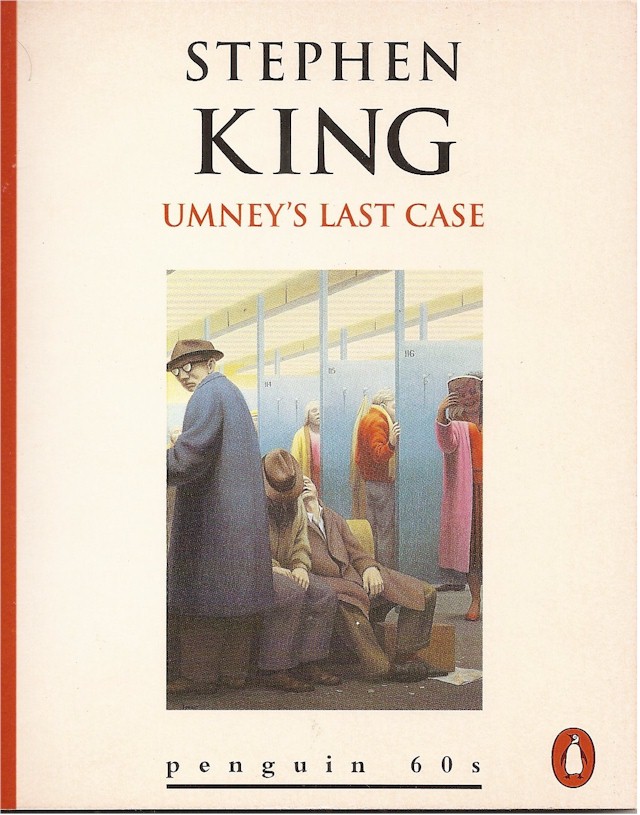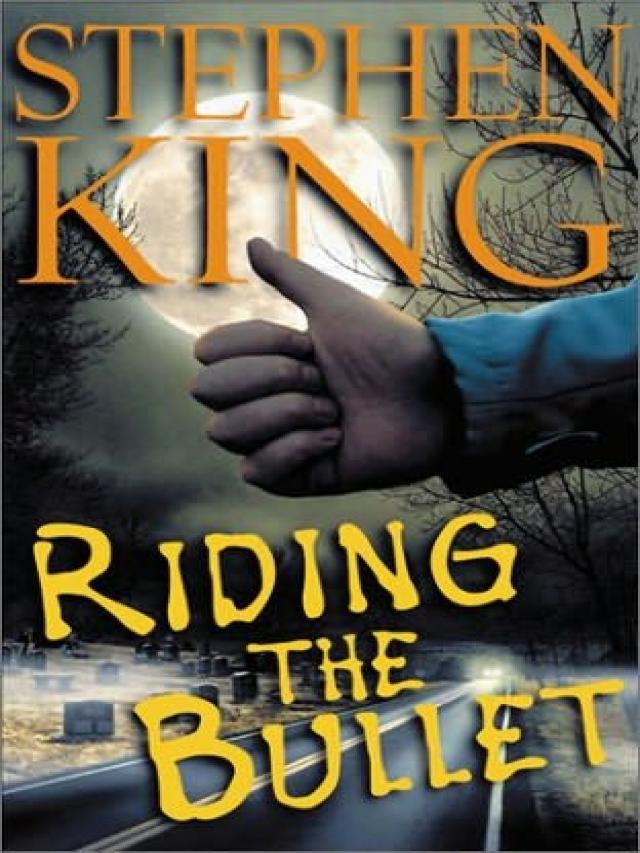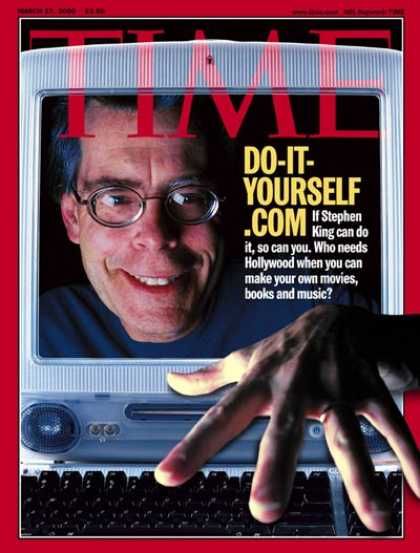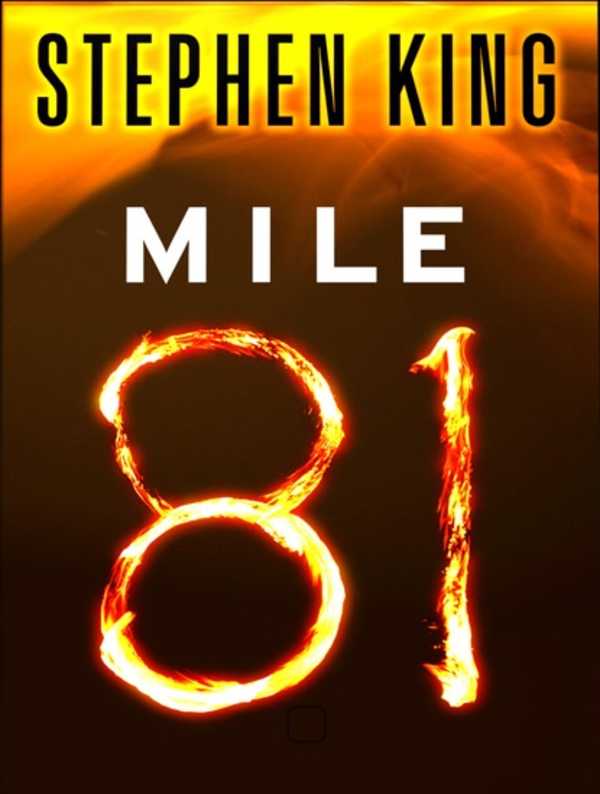September 1, 2011
 Today marks the release of a new Stephen King novella called “Mile 81,” which is available only as an eBook. This isn’t unprecedented for King, though the technology has changed significantly since the first time he did this.
Today marks the release of a new Stephen King novella called “Mile 81,” which is available only as an eBook. This isn’t unprecedented for King, though the technology has changed significantly since the first time he did this.
Pop quiz time: Name the first King story released electronically prior to any appearance in a book. You’ll probably be surprised by the answer. In 1993, when web browsers were first being developed, the first world appearance of “Umney’s Last Case” was an eBook from the Online Bookstore in Maine. You had to telnet into the OBS site, leave your credit card information (the story cost $5) and then FTP into their file server to download the story. You could get it as a text file or as a Voyager Expanded Book (for Windows 3.1 or Mac), one of the first attempts to present text onscreen in book format. You could also download a GIF of the Nightmares and Dreamscapes cover.
 In 2000, the year after his accident, King released “Riding the Bullet,” co-published by his publisher, Scribner, and his personal imprint, Philtrum Press. Some sources call this the first-ever mass-market electronic book. The novella, priced at $2.50, was issued as a locked pdf to discourage piracy. Amazon and other online bookstores offered the story for free, leading to crashed servers. Nearly half a million copies were downloaded in the first 24 hours.
In 2000, the year after his accident, King released “Riding the Bullet,” co-published by his publisher, Scribner, and his personal imprint, Philtrum Press. Some sources call this the first-ever mass-market electronic book. The novella, priced at $2.50, was issued as a locked pdf to discourage piracy. Amazon and other online bookstores offered the story for free, leading to crashed servers. Nearly half a million copies were downloaded in the first 24 hours.
Buoyed by the success of that experiment, King returned to a story that had been lying fallow since the 1980s, a serial novel called The Plant. He had distributed three installments to friends and colleagues as Christmas cards, but decided the story was too similar to The Little Shop of Horrors and abandoned it. Publishing it online seemed like a way to re-energize the project. He revised the existing text and continued the story. This time he skipped the middleman and published through Philtrum Press only, selling installments via his website. As an experiment, he made payment on the honor system. People were encouraged to submit $1 per download, but were not required to do so.  However, King warned that if too many people didn’t pony up, he would stop releasing installments.
However, King warned that if too many people didn’t pony up, he would stop releasing installments.
He discovered one of the perils of publishing a serial novel on the fly: the story dried up on him. He felt like he was pushing it instead of being pulled along by it. Payment percentages were declining, but he still called the project permission to print money. When he abandoned the book again, much to the chagrin of those who had been following it for half a year, pundits cited The Plant as a failed experiment in Internet self-publishing when, in fact, it was just another failed novel.
 In 2009, King’s agent, Ralph Vicinanza, approached him with the idea of writing a story for release as an e-book to spark excitement in electronic publishing. King’s response was “Ur,” a story about a schoolteacher whose unusual pink Kindle allows him to access books that were never written in this reality, like unknown Shakespeare plays and new novels by Hemingway and Faulkner. He started it in January and delivered the 21,000-word story to Amazon at the beginning of February. The electronic proofs were sent to King’s and Vicinanza’s Kindles two days later. King and “Ur” promoted the launch of Amazon’s Kindle 2 in early April. This time, readership was restricted to Kindle owners; however, over 10,000 people downloaded it within the first three weeks. The subsequent development of Kindle apps for the iPhone/iPad, a PC version of the reader and a recent cloud app for certain browsers has removed most limitations on potential readership.
In 2009, King’s agent, Ralph Vicinanza, approached him with the idea of writing a story for release as an e-book to spark excitement in electronic publishing. King’s response was “Ur,” a story about a schoolteacher whose unusual pink Kindle allows him to access books that were never written in this reality, like unknown Shakespeare plays and new novels by Hemingway and Faulkner. He started it in January and delivered the 21,000-word story to Amazon at the beginning of February. The electronic proofs were sent to King’s and Vicinanza’s Kindles two days later. King and “Ur” promoted the launch of Amazon’s Kindle 2 in early April. This time, readership was restricted to Kindle owners; however, over 10,000 people downloaded it within the first three weeks. The subsequent development of Kindle apps for the iPhone/iPad, a PC version of the reader and a recent cloud app for certain browsers has removed most limitations on potential readership.
 Which brings us to “Mile 81,” an 80-page eBook from Scribner that contains the 17,000-word novella and an excerpt from King’s upcoming novel, 11/22/63, available for Kindle, Nook, iBook and other readers/apps. Klout.com made the eBook available to select social media “influencers” six days before the story’s publication to generate buzz.
Which brings us to “Mile 81,” an 80-page eBook from Scribner that contains the 17,000-word novella and an excerpt from King’s upcoming novel, 11/22/63, available for Kindle, Nook, iBook and other readers/apps. Klout.com made the eBook available to select social media “influencers” six days before the story’s publication to generate buzz.
Scribner says “Mile 81” has the heart of Stand By Me and the genius horror of Christine (the film version is mentioned in the story), but I am reminded more of From a Buick 8 and Under the Dome. It’s the story of 10-year-old Pete Simmons, who is looking for an adventure while his older brother is off playing dangerous games with his friends. He decides to explore an abandoned rest stop on I-95 (mentioned in Dreamcatcher) used by “Big Kids” as a hangout. Pete finds a half-full bottle of vodka and drinks himself into a stupor after breaking into the shuttered Burger King.
While he’s unconscious, a mysterious, mud-coated station wagon knocks down the traffic cones blocking the entrance to the rest stop and, like a siren from Greek mythology, lures one passing driver after another to pull over to investigate. These good Samaritans are not rewarded for their kindness: the station wagon’s bite is worse than that of the Buick Roadmaster.
The mid-section of “Mile 81” consists of a series of vignettes that paint portraits of those lured to the rest stop. In a handful of pages each, King brings these individuals or families to life, before handing them over to the station wagon. The adults aren’t ready to believe that anything supernatural is happening, which is why it’s kids who come to the rescue. Kids accept what they see without filtering it through a lifetime of rational thought. And it’s a kid’s trick that finally puts paid to the “station wagon” that, for reasons unknown, decided to visit an abandoned rest stop on the stretch of I-95 that passes through King’s strange and haunted version of the state of Maine.
